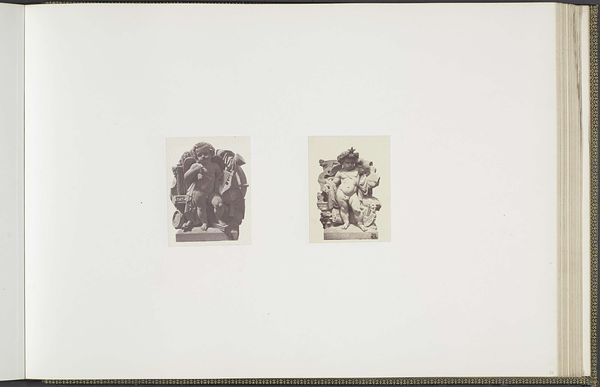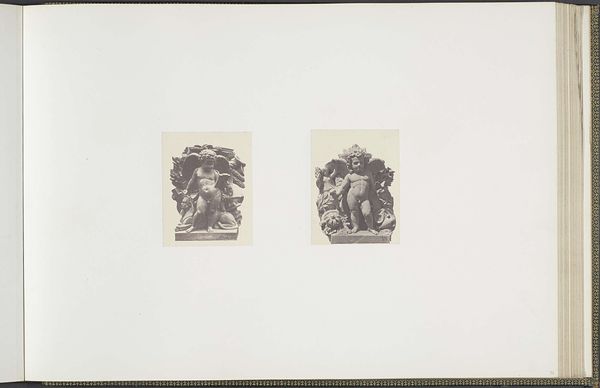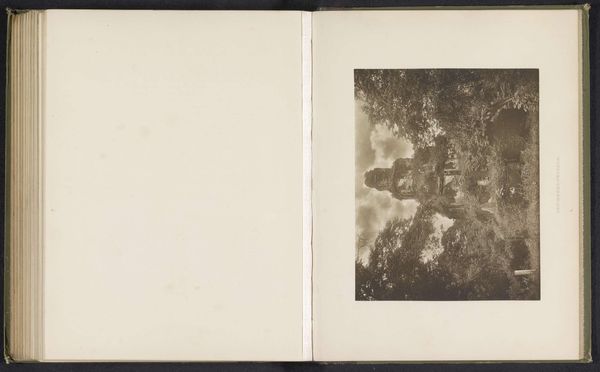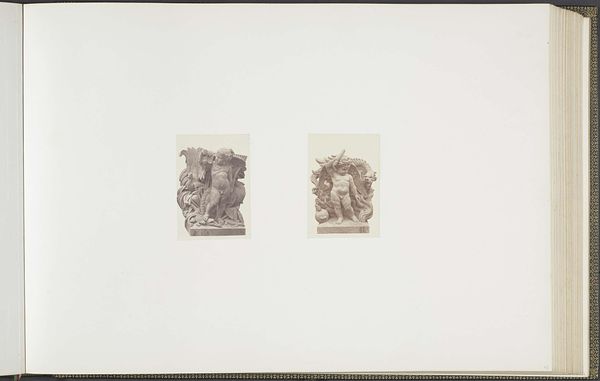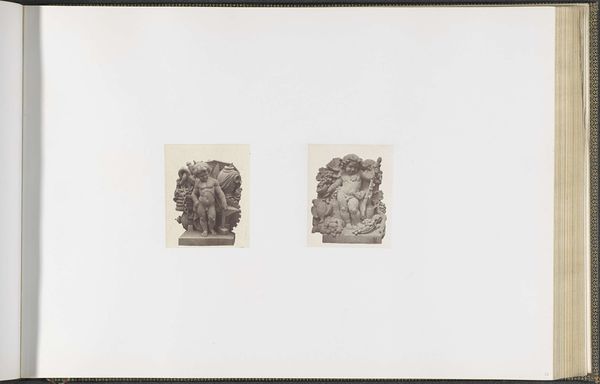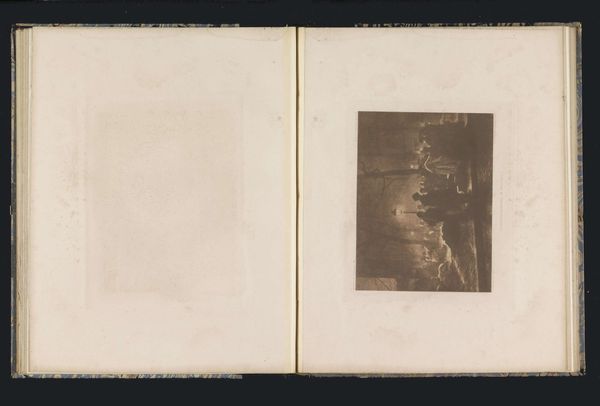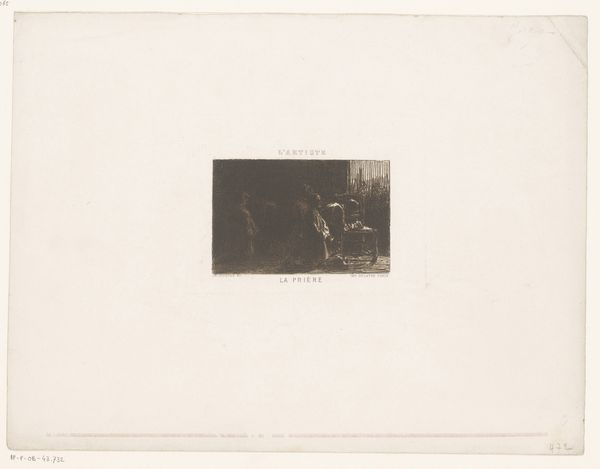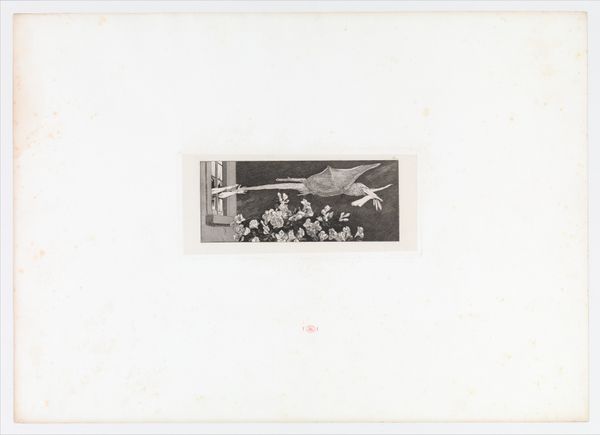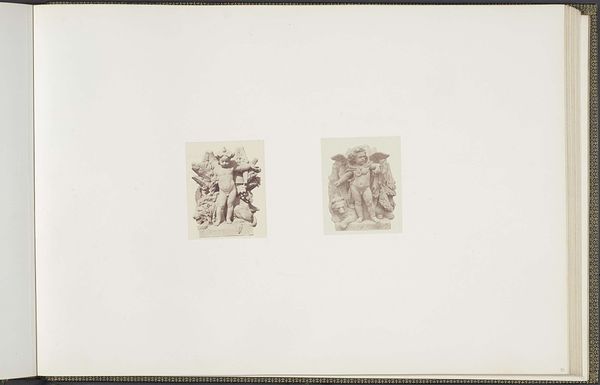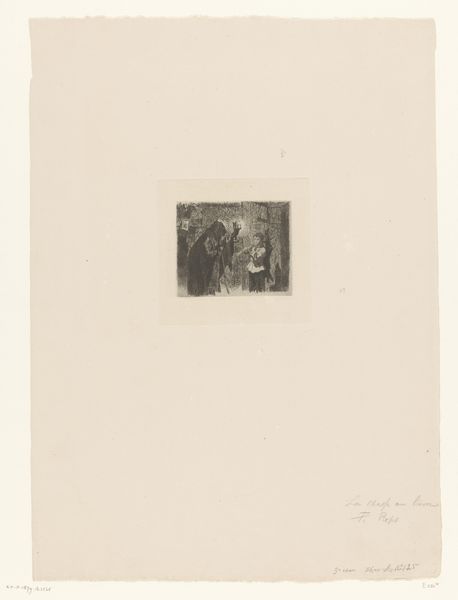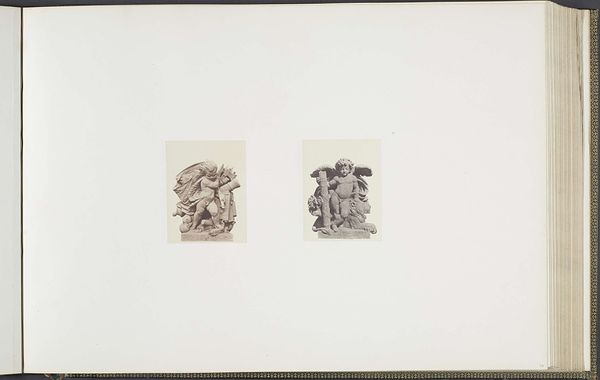
Gipsmodellen voor beeldhouwwerken op het Palais du Louvre: boven twee doggen en een mannenhoofd, beneden twee leeuwen en een vrouwenhoofd, beide door Emmanuel Fremiet c. 1855 - 1857
0:00
0:00
print, photography, sculpture
#
neoclacissism
# print
#
classical-realism
#
photography
#
sculpture
Dimensions: height 382 mm, width 560 mm
Copyright: Rijks Museum: Open Domain
Editor: This is "Gipsmodellen voor beeldhouwwerken op het Palais du Louvre…", a photograph from between 1855 and 1857 by Edouard Baldus, depicting plaster models for sculptures by Emmanuel Fremiet. What strikes me is how the arrangement of animal figures around human heads creates a sense of symmetry and almost heraldic design. How do you interpret the relationship between the different forms? Curator: Formally, we see a deliberate play with symmetry and balance. Baldus has carefully arranged his composition, isolating the sculptural elements against a neutral background. The juxtaposition of canine and feline forms with human visages generates a visual tension, drawing the eye to the inherent structures within each subject. Observe how the photographic technique itself, the tonal range, impacts the overall impression, flattening the three-dimensional quality, and thus, emphasizing shape. Do you notice a dialogue emerging between the distinct planes captured in each register of the print? Editor: Yes, the flattening effect does push the individual sculptural groupings forward and links them in an interesting way to the flat background sheet of the album. Do you think there’s a connection between how light interacts with the photographed sculptures, and how that impacts Baldus' photograph itself as a material object? Curator: Indeed, light dictates how we apprehend form and Baldus exploits it, employing raking light to accentuate relief and volume within the sculptures, paradoxically creating an interplay between sculptural depth and photographic flatness. Semiotically speaking, we can approach this photograph as more than just a reproductive record of Fremiet's work, but rather as Baldus' independent creation through deliberate selection of compositional elements and manipulation of lighting and contrast, generating new codes. Editor: So, it’s not merely documentation, but a commentary on form itself, transformed by the act of photographic capture. Thank you for making that distinction clear; it really makes me appreciate the interplay between the sculpture and the photographic print. Curator: Exactly. And thinking of how those forms are reproduced emphasizes how both sculptors and photographers can translate reality through their choice of form and composition.
Comments
No comments
Be the first to comment and join the conversation on the ultimate creative platform.

